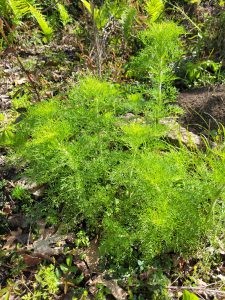 Summer weeds are here. What should we do? As we are officially into summer you are probably noticing many of those summer weeds poking through your lawn by now, or perhaps they have taken over completely. Do not give up, there is still hope for a beautiful lawn with less weeds.
Summer weeds are here. What should we do? As we are officially into summer you are probably noticing many of those summer weeds poking through your lawn by now, or perhaps they have taken over completely. Do not give up, there is still hope for a beautiful lawn with less weeds.
The first thing is to be able to identify the weed and identify the type of grass. Now you may be thinking that is impossible and maybe you are thinking why it is important to identify those? The answer to that question is simply that not all chemicals are the same and understanding what you have and the best time of year to spray for that will save you both time and money. Weeds fall into three categories: Broadleaf, Grass, and Sedge. Remember, a weed could be any plant that is out of place. Weeds will compete with desirable plants for nutrients, water, light, and space.
Once you understand what category your weed falls into the next step is to know the life cycle. For example, winter annuals will die out naturally as the temperatures increase and a chemical may not be needed. There are weeds that complete their cycle in one year (winter and summer weeds) and there are weeds that complete their cycle in two years (biennials). A biennial has vegetative growth the first year and will flower and die the second year, examples are Carolina false dandelion, Oldfield toadflax, and cudweed.
Next you will want to identify the indicator species. What does this mean? It means that there are some weeds that grow well in compacted soils like goosegrass and annual bluegrass. Others like it very wet (poor drainage) such as dollar weed, sedges and torpedo grass. While there are weeds such as sandbur and rustweed that like it very dry and sandy. Knowing this can help you do preventative weed control. Grow a healthy turf starting with the right selection, proper cultural practices, pest control, traffic control, and sanitation.
When you are faced with the decision to use chemicals to combat your lawn weeds there are a few things to know. There are selective herbicides that control certain species without hurting others (your lawn) and there are nonselective herbicides that control green plants regardless of species. Also, there are contact herbicides, which are exactly how their name implies. They affect only the portion of the plant that the herbicide touches. There are also systemic herbicides which are translocated through plant’s vascular system.
The best time to spray herbicides is when the weeds are actively growing, young and not drought stressed or producing seed heads. A table below shows the active ingredients best for the three categories of weeds.
| Broadleaf Weeds | Grassy Weeds | Sedge Weeds | |
| Centipede | 2-4D + Dicamba +MCPP Thiencarbazone+iodosulfuron + dicamba | Sethoxydim | Halosulfuron-methy, Sulfentrazone, Imazaquin, Bentazon, |
| Bermuda | 2-4D + Dicamba +MCPP Thiencarbazone+iodosulfuron + dicamba | Quinclorac | Halosulfuron-methy, Sulfentrazone, Imazaquin, Bentazon, |
| Zoysia | 2-4D + Dicamba +MCPP Thiencarbazone+iodosulfuron + dicamba | Fluazifop, Quinclorac | Halosulfuron-methy, Sulfentrazone, Imazaquin, Bentazon, |
| St. Augustine | 2-4D + Dicamba +MCPP Thiencarbazone+iodosulfuron + dicamba | None | Halosulfuron-methy, Sulfentrazone, Imazaquin, Bentazon, |
| **temperature restrictions |
The key is to identify the type of turf you have and the type of weeds you have in the lawn. Further, look into if there are any factors that can be adjusted that might be causing the excess of weeds. And lastly, make sure you are using the right method, chemical, and timing for control. For more information on summer weeds and lawns, please contact your local county extension office.
Information for this article can be found Managing Weeds in Warm Season Lawns | Home & Garden Information Center (clemson.edu)
- Steps to Keeping a Healthy Lawn - March 30, 2023
- Companion Planting: What is it? - February 21, 2023
- Educational Opportunity: Fruit and Vegetable Meeting - December 22, 2022
